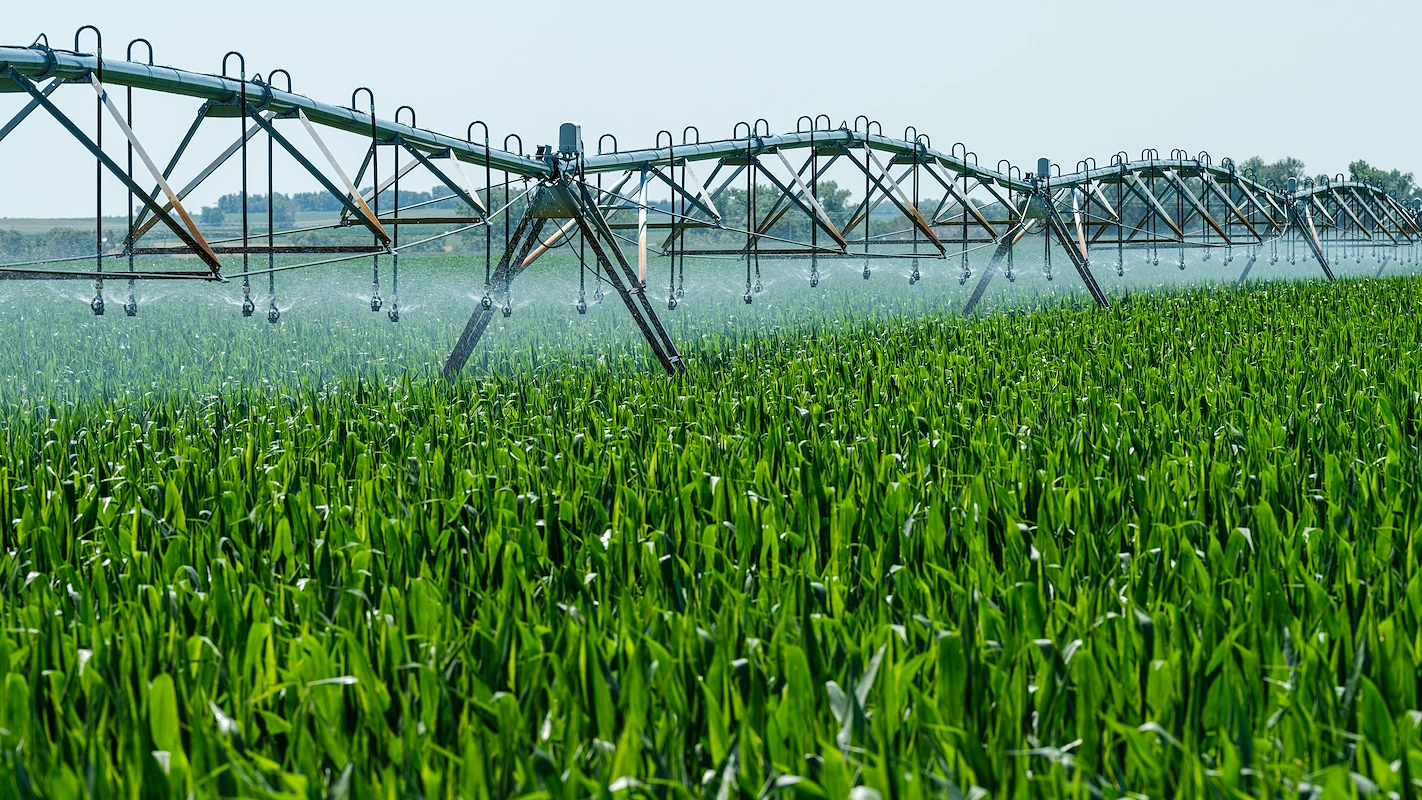Starting a green business is a rewarding venture that combines a passion for sustainability with business savvy. The market for sustainable solutions is worth billions, but that accessibility does not guarantee success.
This guide will take you through the practical steps of validating your concept, securing funding, navigating permits, and building supplier relationships to help you launch a successful green business in the U.S.
Step 1: Validate your green business idea
Market and competitor research
Begin by analyzing market data. Reports from the Environmental Protection Agency (EPA) or databases like Statista offer broad insights into sustainability trends. You need to find a specific problem your audience wants solved sustainably, not just assume "eco-friendly" is a selling point.
A frequent misstep is to ignore the competition's quality. Your product must perform well first. Use the B Corp Directory or Thomasnet to find sustainable competitors. You can also use Google Trends to compare search interest for different green product niches.
Budgeting your startup costs
With this in mind, let's talk numbers. A detailed budget is your best friend for planning. Breaking down expenses helps you see the full picture and map out your funding strategy more effectively. This foresight can make securing capital much smoother.
Expect to spend between $300 and $1,000 on legal formation, like an LLC, and basic permits. Sustainable material sourcing and initial inventory can range from $2,000 to $10,000. A simple website and initial marketing might add another $1,000 to $3,000.
Also, consider certification costs. While optional, labels like Fair Trade or Green Seal build trust but come with fees. Application and annual costs can run from $500 to over $5,000, so research the ones that matter most to your target customer.
Here are 3 immediate steps to take:
- Survey at least 30 potential customers to confirm their interest in your specific green solution.
- Identify and analyze three direct competitors from the B Corp Directory or a similar database.
- Create a startup budget spreadsheet that includes line items for legal fees, certifications, and inventory.
Step 2: Set up your legal structure and licensing
You might want to form a Limited Liability Company (LLC). It protects your personal assets if the business faces debt or lawsuits. Filing costs range from $50 to $500 depending on your state, and it offers simpler tax filing than a corporation.
Next, get your Employer Identification Number (EIN) from the IRS website. It is a federal tax ID for your business, and you will need it to open a bank account and hire employees. The application is free and takes minutes to complete online.
Navigate state and local requirements
Register your business name with your state’s Secretary of State. You will also likely need a seller’s permit from your state’s tax agency to collect sales tax. Processing can take a few weeks, so plan for that delay.
A frequent oversight is to ignore local rules. Check your city or county clerk’s office for a general business license and specific zoning permits. Some cities also offer a "Green Business Certification" which can add credibility, so look into that as well.
Here are 4 immediate steps to take:
- Decide on a business structure and file the paperwork with your Secretary of State.
- Apply for a free Employer Identification Number (EIN) on the IRS website.
- Visit your city’s website to identify required local business licenses and zoning laws.
- Research the cost and requirements for one environmental permit relevant to your business type.
Step 3: Secure your insurance and manage risk
Choose the right coverage
General Liability insurance is your foundation, covering accidents and injuries. Expect to pay $400 to $1,500 annually for a policy with $1 million in coverage. For a green business, Product Liability is just as important. It protects you if your sustainable product fails to perform as advertised.
A frequent issue for green companies is the risk of "greenwashing" claims. Your Product Liability policy can help defend you if a customer alleges your eco-friendly marketing was misleading. This coverage often adds $500 to $2,000 to your annual premium but is well worth it.
If you have a physical shop, you will also need Commercial Property insurance. And once you hire your first employee, Workers' Compensation is mandatory in most states. For business-related driving, a Commercial Auto policy is necessary, as personal auto insurance will not cover it.
Find a specialized provider
You might want to work with an agent who understands sustainable businesses. Providers like The Hartford, Hiscox, and AmTrust have experience with the unique risks of green products. A general agent may not grasp the nuances of certification claims or supply chain vulnerabilities.
Here are 4 immediate steps to take:
- Request quotes for General and Product Liability insurance with $1 million coverage.
- Review your marketing claims to ensure they are accurate and reduce greenwashing risks.
- Determine if you need Workers' Comp or Commercial Auto insurance for your operations.
- Contact one insurance provider that specializes in sustainable businesses, like The Hartford or Hiscox.
Step 4: Set up your physical space
Find the right location
For a small retail or workshop space, look for 500 to 1,500 square feet. Check your city’s planning department website for zoning laws. A space zoned for "commercial retail" is different from "light industrial," and a mistake here can shut you down before you start.
When you negotiate a lease, you have some leverage. You might ask the landlord to split the cost of LED lighting upgrades or to install a water-saving toilet. These requests align with your brand and can lower your utility bills over the long term.
Source your equipment and supplies
Your equipment needs depend on your business. A natural soap maker might need stainless steel pots ($100-$300) and a quality stick blender ($50-$150). A zero-waste refill shop would require bulk dispensers ($30-$100 each) and a certified digital scale ($100-$250).
With equipment in mind, let's talk suppliers. Platforms like Faire connect you with wholesale sustainable brands, often with a $150 minimum order. For raw materials, a supplier like Bulk Apothecary might require you to buy in case-pack quantities, so confirm their terms first.
Here are 4 immediate steps to take:
- Check the zoning classification for two potential business locations on your city’s website.
- Draft one lease negotiation point related to energy-efficient upgrades.
- Price out three pieces of equipment for your specific business idea.
- Research the minimum order quantity for one potential supplier like Faire or Bulk Apothecary.
Step 5: Set up your payment processing
First, decide on your payment terms. For services like eco-consulting or for custom orders, it is common to require a 50% deposit. For products sold at markets or online, you will collect the full payment at the time of sale. Clear terms prevent future misunderstandings.
Now that you have terms, let's talk about payment solutions. Focus on transaction fees and portability. Many processors charge between 2.5% and 3.5% per transaction, plus monthly fees. For a new business, these costs add up, so finding a lower rate is a smart move.
For green businesses that accept payments on-site or on-the-go, JIM offers a streamlined solution. With JIM, you can accept debit, credit, and digital wallets directly through your smartphone. Just tap and the sale is done. It is a great fit for pop-up shops or farmers' market stalls.
At just 1.99% per transaction with no hidden costs or extra hardware, JIM is more affordable than many alternatives. This simple fee structure helps you keep more of your revenue. Getting started is straightforward.
- Get Started: Download the JIM app for iOS.
- Make a Sale: Type the sales amount, hit sell, and ask your customer to tap their card or device on your phone.
- Access Funds: Your money is available on your JIM card as soon as the sale is done, with no wait for bank transfers.
Here are 3 immediate steps to take:
- Decide on your payment terms, such as requiring a deposit for custom orders.
- Compare the transaction fees of two other payment processors with JIM's 1.99% rate.
- Download the JIM app to explore its features on your phone.
Step 6: Secure funding and manage your finances
Find the right funding source
The SBA Microloan program is a good starting point, offering up to $50,000. Interest rates typically fall between 8% and 13%. You will need a solid business plan and a decent credit score to qualify. These loans are specifically designed for new, small businesses.
Beyond loans, you can also look at grants. Organizations like Patagonia offer grants for environmental initiatives. The EPA’s Small Business Innovation Research (SBIR) program is another option if your business involves green technology, though the application process is competitive.
Many new owners focus on startup costs but overlook the cash needed to operate for the first six months. Calculate your total monthly expenses—rent, inventory, marketing—and aim to have at least half a year's worth of that amount in the bank as working capital.
Set up your financial systems
Once you have your EIN, open a dedicated business bank account immediately. This separation is vital for clean bookkeeping and legal protection. Also, start with accounting software like Wave or QuickBooks from day one to track every dollar in and out of your business.
Here are 4 immediate steps to take:
- Calculate your working capital needs for the first six months of operation.
- Research the qualification requirements for an SBA Microloan in your state.
- Identify one green-focused grant program that aligns with your business mission.
- Open a dedicated business bank account to separate your finances.
Step 7: Hire your team and set up operations
Define key roles
Your first hire will likely be a part-time Retail Associate or a Production Assistant. A Retail Associate handles sales and educates customers on your products' sustainable features. Expect to pay between $15 and $22 per hour, depending on your location.
For a maker business, a Production Assistant helps with assembly and quality control. A frequent mistake is to under-train staff on your green mission. Your team must be able to explain why your materials are sustainable to prevent customer confusion and build trust.
Streamline your daily work
Once you have a team, you might want to use scheduling software like Homebase or Gusto to manage shifts and payroll. Many new owners hire too quickly, which can strain cash flow. A good target is to have one full-time employee for every $120,000 in annual revenue.
Here are 4 immediate steps to take:
- Draft a one-page job description for your first potential hire.
- Research local pay rates for that role using Glassdoor or Indeed.
- Create a simple training outline covering your brand’s sustainability claims.
- Sign up for a free trial of a scheduling app like Homebase to see its features.
Step 8: Market your business and acquire customers
Focus on content and social media
Your marketing should educate, not just sell. Create blog or social media posts that explain why your materials are better or how to use your products. For example, a short video showing how to assemble your flat-pack furniture can build trust and demonstrate quality.
Use visual platforms like Instagram and Pinterest to showcase your products in real-life settings. A frequent misstep is to only post product shots. Instead, share behind-the-scenes content or feature customers using your items. Use specific hashtags like #ecohome or #slowfashion to reach your audience.
Build partnerships and local outreach
With your content plan in place, you can look for partners. Collaborate with non-competing green businesses or local influencers for a joint giveaway. This introduces your brand to an audience that already cares about sustainability, which is often more effective than paid ads.
Keep an eye on your numbers. A good conversion rate for email signups from a social media campaign is around 2-5%. Your goal is to build a community, not just make one-off sales. This focus on retention will lower your overall Customer Acquisition Cost (CAC).
Here are 4 immediate steps to take:
- Draft three educational social media post ideas about your brand’s mission.
- Identify two local businesses or influencers for a potential partnership.
- Set up a simple email capture form on your website to start building a list.
- Research three relevant hashtags for your niche on Instagram or Pinterest.
Step 9: Price your products and services
Choose your pricing model
A simple way to start is with cost-plus pricing. First, calculate your Cost of Goods Sold (COGS)—this includes materials, labor, and packaging. Then, add your desired profit margin. For example, if a candle costs $5 to make, a 100% markup sets your wholesale price at $10.
You can also use value-based pricing. This model focuses on the perceived value to your customer. If your product solves a unique problem or uses rare sustainable materials, you can often charge more than the cost-plus model suggests. This works well for innovative green goods.
Set your profit margins
For retail, a gross profit margin of 50-70% is a healthy target. This ensures you can cover overhead costs like marketing and rent. A frequent mistake for new owners is to underprice out of passion. Your pricing must sustain your business, not just your mission.
With that in mind, research your competitors. Look at similar brands on Etsy or in local boutiques. Do not just copy their prices. Instead, analyze how their quality, branding, and sustainable certifications justify their price point. This context helps you position your own products effectively.
Here are 4 immediate steps to take:
- Calculate the total Cost of Goods Sold (COGS) for one of your main products.
- Research the prices of three direct competitors on a platform like Google Shopping.
- Set a target gross profit margin between 50% and 70% for your business.
- Draft two potential prices for one product: one using cost-plus and one using value-based pricing.
Step 10: Implement quality control and scale your operations
Establish your quality standards
As orders increase, you need a system to maintain quality. Define specific metrics. For example, aim for a customer return rate below 5% and a product defect rate under 2%. These numbers give you a clear benchmark for success.
You might also align with formal standards. Certifications like Green Seal or Fair Trade have public criteria you can use as a guide, even if you do not apply right away. They focus on material toxicity and ethical labor, which builds trust.
A frequent mistake is letting quality slide during a growth spurt. To avoid this, implement a simple spot-check system. Inspect every 20th item that comes off your production line. This helps you catch inconsistencies before they reach the customer.
Scale your operations strategically
With your quality checks in place, you can plan for growth. Set clear triggers for expansion. For instance, when you spend over 10 hours a week on packing orders, it is time to consider hiring a part-time fulfillment assistant.
The same logic applies to your workspace. Once you consistently hit 80% of your storage or production capacity for two months, start looking for a larger location. This prevents bottlenecks that can slow down your entire operation.
As you grow, manual tracking becomes difficult. Inventory management software like Katana can help you manage raw materials and finished goods once you have more than 50 different product SKUs. It automates what you used to do in a spreadsheet.
Here are 4 immediate steps to take:
- Define two quality metrics for your main product, like a target defect rate below 2%.
- Review the public criteria for one certification, like Green Seal, to use as a quality guide.
- Set one trigger for hiring your first assistant, such as reaching 50 orders per week.
- Explore an inventory management software like Katana to see its features.
Starting a green business is more than a passion project. It is about building a sustainable company in every sense of the word. Remember that your customers buy good products first, and your green mission is what makes them loyal. You have the roadmap, now go build it.
As you start, keep your operations simple. For payments, a solution like JIM lets you accept cards on your phone without extra hardware. With a flat 1.99% fee, it helps manage costs from day one. Download JIM and get started.















